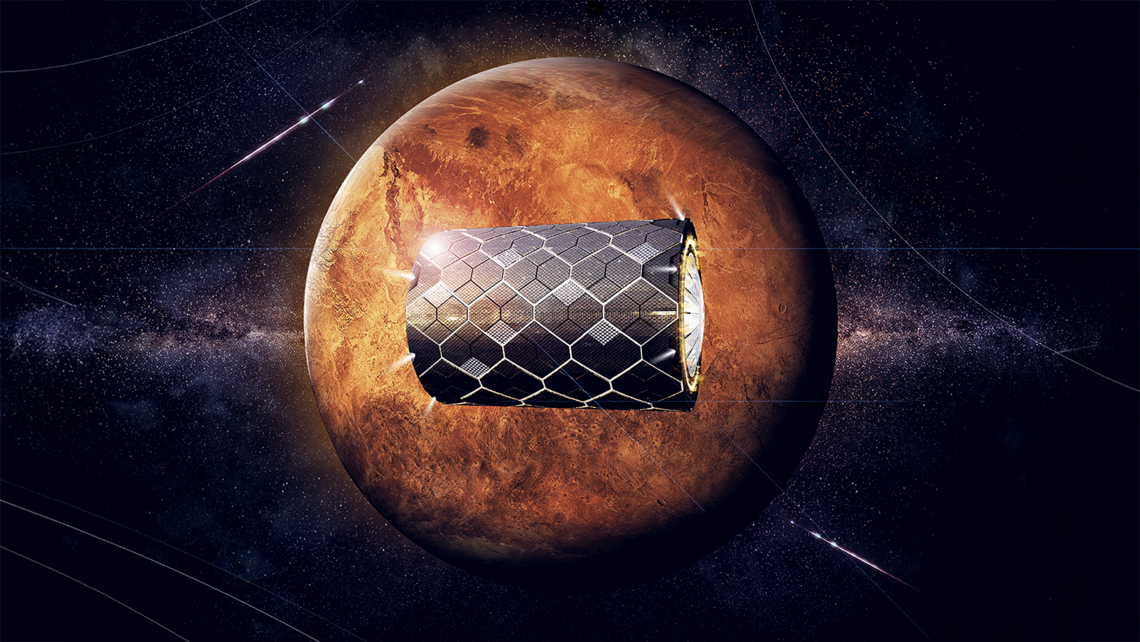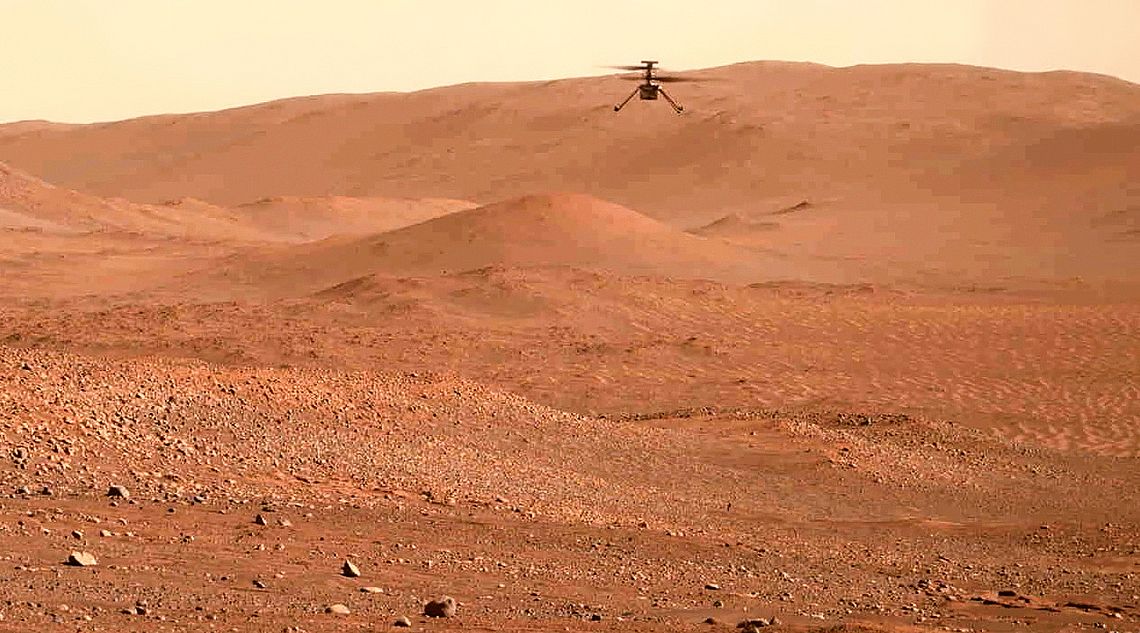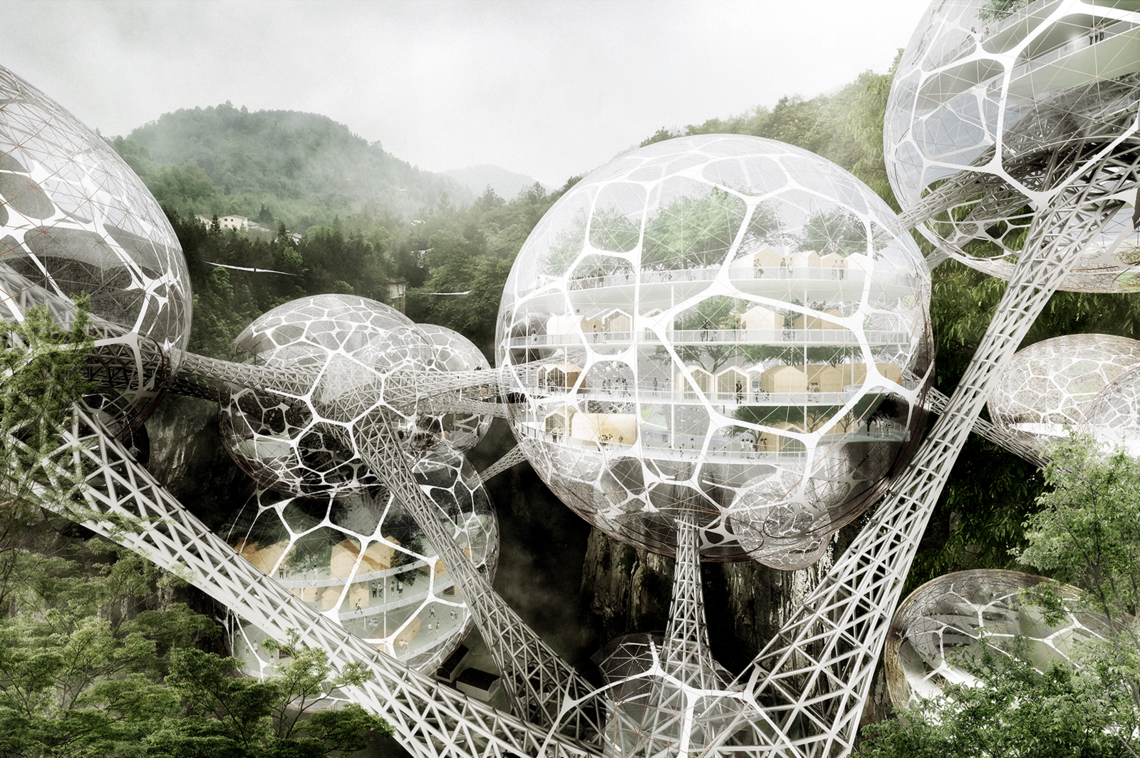The 19th-century infrastructures shape our cities until today. By comparison, can we say what legacy today’s construction industries will leave as a heritage for the future? And will future generations value our legacy – or will they curse us?
Reading time: 10 minutes
I’ll begin with a flashback – right back to the Middle Ages. For medieval people, the entire cosmology from creation to apocalypse spanned only a few thousand years. They were bewildered and helpless in the face of floods and plagues and were prone to irrational dread. Large parts of the Earth were terra incognita.
At the same time, they were great architects and builders: they created cathedrals, constructed with primitive technology by masons who knew they wouldn’t live to see them finished. Vast and glorious buildings that still inspire us centuries later.
What will inspire future generations in coming centuries? I’m an astronomer, hence, let’s start with a cosmic perspective. Earth has existed for 45 million centuries. Throughout most of history, the benefits we garner from the natural world have seemed an inexhaustible resource; and the worst terrors to confront humans – floods, earthquakes, and diseases – came from nature, too.
But this is the first century in which humans became the dominant species who can determine, for good or ill, the future of the entire biosphere. We’re deep in what some have called the Anthropocene era.
The worst threats to humanity are no longer natural ones: they are caused or aggravated by us. The backdrop to current geopolitical challenges is a world where humanity’s collective footprint is getting heavier.
There are about eight billion of us on this planet – twice as many as in the 1960s. The collective demands on energy and resources aren’t sustainable without new technology.
Novel bio and cyber technologies are socially transformative but threaten severe damages if misapplied.
Global warming affects everything
Looming over us all is the threat of human-induced climate change. This is potentially like a global fever, in some ways resembling a slow-motion version of Covid-19. For instance, both crises aggravate the level of inequality within and between nations.
Climate change and environmental degradation may well, later this century, have global consequences even graver than those of pandemics and indeed be irreversible in the long term. But a potential slow-motion catastrophe doesn’t engage the public and politicians. Politicians have minimal incentive to address longer-term threats that aren’t likely to occur while they’re still in office, and which are global rather than local.
We’re aware of the threats but fail to prioritize countermeasures because their worst impact stretches beyond the time horizon of political and investment decisions. Our predicament resembles that of the proverbial boiling frog contented in a warming tank until it’s too late to save itself.
“The backdrop to current
geopolitical challenges is a world
where humanity’s collective footprint
is getting heavier.”
Thanks to the green revolution, food production has doubled over the last fifty years. World food production needs to double again by 2050, both to cope with the rise in population and to ensure that people everywhere are well nourished. The further doubling is more problematic.
There are constraints on energy, on the quantity of fertile land, and on the supply of water. We need modes of farming that can produce crops efficiently in a changing climate, master low-till, are water-conserving, and avoid encroaching on natural forests.
There has to be consequent pressure to enhance the yield from the oceans, without allowing overfishing to drive species to extinction – together with greater efforts to reduce waste and improve irrigation.
The buzz-phrase for all is sustainable intensification.
Science on a rescue mission
However, to insert a bit of good cheer: science can offer a win-win roadmap to a low-carbon future, which offers huge opportunities to the construction industry. Nations should accelerate Research and Development into all forms of low-carbon energy generation and into other technologies where parallel progress is essential.
Storage technologies are crucial if we’re dependent on unsteady generation via sun or wind. Integrated long-range low-loss grids should also be considered, to transport solar energy from sunnier to less sunny regions.
Achieving this would require vision, commitment, and public-private investment on the same scale as the building of railways in the 19th century. Indeed, complete transformation of the world’s energy and transport infrastructure is a massive construction and engineering project that will inevitably take several decades.
Wind and solar energy generation are of course both being widely deployed, though there are niches that can be filled by geothermal, hydro, and tidal power. Tidal barriers or lagoons seem feasible. The capital involved in long-lived major earthworks can be amortized over many decades.
And what about nuclear power? Despite the ambivalence about widespread nuclear energy, it’s surely worthwhile to boost Research and Development into fourth-generation and small modular nuclear power which could be more flexible, and safer, than existing reactors.
And of course, nuclear fusion, the process that powers the Sun, still beckons as an inexhaustible source of energy. Attempts to harness this power have been pursued since the 1950s. There have been some false dawns, but the history is of receding horizons: commercial fusion power still seems at least thirty years away.
Most prototypes deploy magnetic forces to confine gas at a temperature of millions of degrees, as hot as the centre of the Sun. Despite its cost and the formidable challenges it poses, the potential pay-off is so great that it is surely worth continuing these developments.
Real technological breakthroughs are needed in energy generation, storage, and smart grids, to bend the trajectory of CO2 emissions.
“There are constraints on energy,
on the quantity of fertile land, and
on the supply of water.
We need modes of farming that
can produce crops efficiently
in a changing climate, master low-till,
are water-conserving, and avoid
encroaching on natural forests.”
My own special field is space exploration, so I naturally wonder about the future of human space flight after the 50-year post-Apollo hiatus. Space technology is pervasive today. We depend on it every day for satellite navigation, communication, and weather forecasting. And it’s in space, a hostile environment for humans; robots have the greatest scope here and will raise the fewest problems.
Two things have barely changed: human bodies and NASA’s rockets. But now the practical need for astronauts is getting weaker as robots acquire better sensors and more artificial intelligence. During this century, the entire solar system will be explored by flotillas of tiny robotic craft. Advanced robotic fabricators will be able to assemble large structures in free space or on the Moon, for instance giant telescopes or solar energy collectors.

NASA's "Spacescraper" project is designed to facilitate the colonization of Mars, which is very inhospitable to humans. One condition is that people can be protected from cosmic radiation; possibly by a magnetic field. The spacecraft pictured above is inspired by NASA's Magnetospheric Multiscale Spacecraft technology.
© Adam Fernández

The Perseverance rover recorded the 54th flight of the Ingenuity Mars Helicopter on August 3, 2023. Harsh environmental conditions, including a thin carbon dioxide atmosphere, the absence of a protective magnetic field, and bone-chilling average low temperatures of -62 degrees Celsius, along with radiation exposure, make terraforming Mars and human colonization formidable challenges.
© NASA/JPL-Caltech/ASU/MSSS
The most relevant differences between the Apollo era and the mid-2020s are the amazing improvements in our ability to create, launch, and guide robot explorers. These are exemplified by the suite of rovers on Mars. Perseverance, NASA’s latest prospector, can drive itself through rocky Martian terrain with only limited guidance from Earth.
Furthermore, improvements in sensors and in artificial intelligence will enable the robots themselves to identify particularly interesting sites from which to gather samples for return to Earth.
The same is true for the mining of rare minerals. Harrison Schmidt is one of the two last people to walk and drive a buggy on the Moon. As a Senator, today he advocates massive strip mining to extract helium 3 to be used as fuel in fusion reactors.
By 2100, intrepid thrill-seekers may have established bases independent from the Earth. But don’t ever expect mass emigration from our planet. It’s a dangerous delusion to think that space offers an escape from Earth's problems. Dealing with climate change on Earth is a doddle compared to terraforming Mars. There’s no Planet B for ordinary risk-averse people. We must cherish our earthly home.
“Dealing with climate change
on Earth is a doddle compared
to terraforming Mars.
There’s no Planet B for ordinary
risk-averse people. We must
cherish our earthly home.”
Cosmic superpowers – but no Planet B
Still, we and our progeny here on Earth should cheer on the brave space adventurers, because they will play a pivotal role in spearheading the post-human future and determining what happens in the 22nd century and far beyond. This is why.
The pioneer explorers will be ill-adapted to their new habitat. They will have a more compelling incentive than those of us on Earth to re-design themselves. They’ll harness the super-powerful genetic and cyborg technologies that will be developed in coming decades.
This might be the first step towards divergence into a new species. So, it’s these spacefaring adventurers, not those of us comfortably adapted to life on Earth, who will spearhead the post-human era.
But life would be uncomfortable on Mars or even on the Moon. There’s no atmosphere that humans can breathe; they’d face dangerous levels of radiation and a huge range of temperatures. Their lives will need to be spent underground. I don’t think those on Earth will envy them.
We can’t confidently predict what transformative discoveries will have been made by then or the amazing technologies they may have spawned. One must certainly hope that the welfare and resource gap between the prosperous North and the Global South will have been narrowed – a development that will have required massive efforts to construct new infrastructure worldwide.
A benign scenario would nonetheless leave a large fraction of each region close to a natural state, preserving at least the present level of diversity in wildlife and vegetation. Energy would be derived from clean sources. All industrial production would be as pollution-free as possible: indeed, some manufacturing could be carried out in space.
There would be a network of underground fibre and cables to carry energy and information, offering security and high redundancy. Water would, wherever necessary, be pumped great distances to alleviate droughts in any region.
If there is to be widespread adoption of nuclear fission energy to supply base load, the problem of safe underground disposal of radioactive waste will need to have been solved and huge repositories constructed.
Wherever possible, buildings would be long-lived; if they had a short lifetime, they would be built from materials that were recyclable or reusable.
But there is a contrasting scenario, a doom-laden one. Our generation could, through poor planning and lack of foresight this century, bequeath to our descendants a world still dependent on fossil fuels. Continuing rises in CO2 levels would have led to a much-changed climate, triggering tipping points that have induced irreversible changes.
Large areas of our coastal cities will need to be evacuated because of rising sea levels. Among the highest-priority construction projects worldwide would be seawalls and embankments to protect against rising sea levels and more violent storms.
It’s crucial that the governments of our countries ensure that we’re good ancestors, leaving a positive legacy for future generations in coming centuries rather than snuffing out the progress already achieved and leaving a bleak and devastated biosphere.

Inheritance and future development of local traditional space: different functional spheres are connected in series with truss supports, so that the main body of the building is suspended inside the Tiankeng, in Yunnan Province in China, minimizing the impact on the ecological environment, and forming a scattered architectural distribution.
© 刘舒展 Shuzhan Liu, 段思昂 Siang Duan, 高一民 Yimin Gao, 李竞一 Jingyi Li, 王世良 Shiliang Wang, 魏大旭 Daxu Wei(中国)
Lord Martin Rees, Prof. em.; Ph.D.
is an astrophysicist and the Astronomer Royal of the United Kingdom. Rees specializes in space exploration, high energy astrophysics, and cosmology. In his most recent book "If Science is to Save Us" he explores why understanding science and technology is crucial for the future of humanity and generations to come.

Header image: © Gary Campbell-Hall / Wikipedia